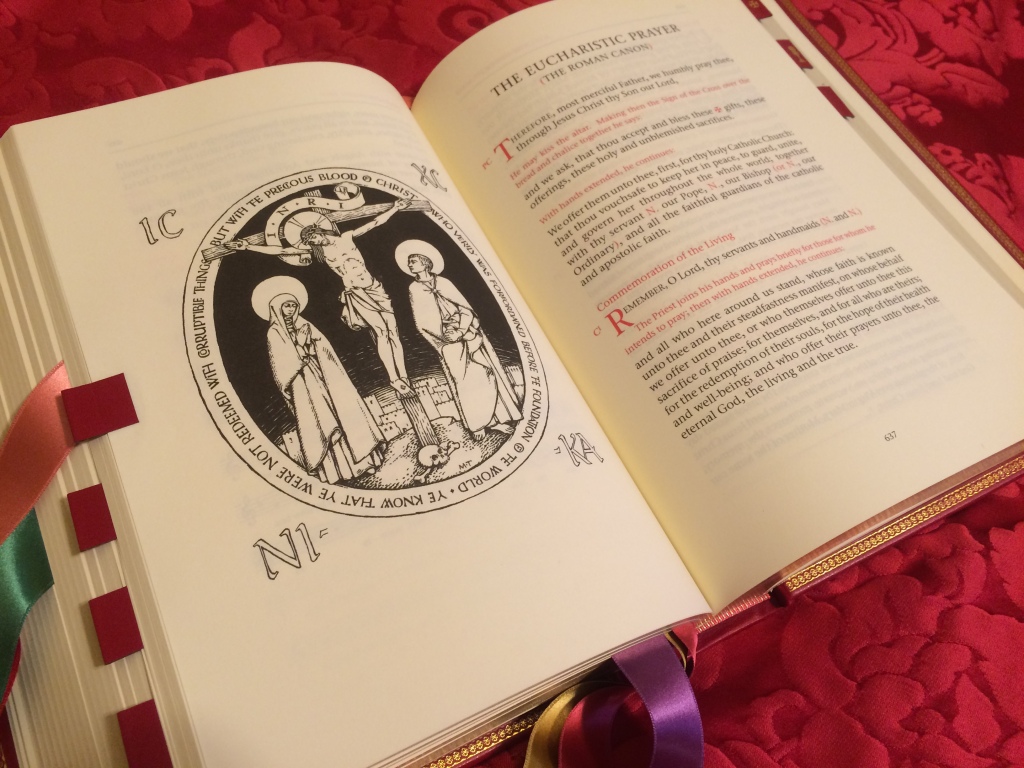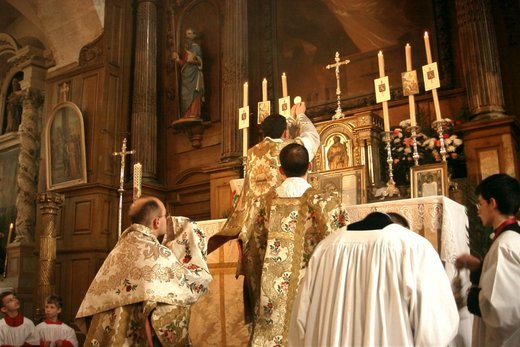While clearing out in preparation for my move back to the UK later this year, I came across an article in the Catholic Herald, written in August 2016 by Damian Thompson entitled ‘The Ordinariate Mk II.’ It seems to me to be worth reflecting on what he wrote eight years ago – and what has changed.
He begins by pointing out the the Ordinariate ‘has not been a runaway success’. He goes on to criticise the English hierarchy for their failure to encourage the new experiment which allows, as he puts it, ‘Catholic-minded Anglicans to cross over without sacrificing the cadences of Cranmer and Choral Evensong.’ But the small numbers of Anglican laity in proportion to the number of priests has convinced him that the Ordinariate in its present form will ‘wither away’.

Two columns into the article I was getting nervous about the praise being heaped on the Divine Worship Missal. In his opinion ‘Ordinariate priests and laity who never liked their unique Missal, Divine Worship, should slip quietly into the Catholic mainstream.’ Ouch! Is he talking about me – and others? It’s important to remember straightaway that the Missal was produced some time after the creation of the Ordinariate. Most of the clergy who became Catholics via the Ordinariate (in the UK) had been contentedly using the current Roman Missal – and indeed Pope Benedict drew attention to this, remarking with approval that this showed their acceptance of Catholic belief in the Eucharist. This is hardly the ‘playing at being “Roman” ‘ which Thompson says characterises converts. The words of the Prayer Book are, he says, ‘beloved by traditional Anglicans – but not by hardline Anglo-Catholics.’ In which case, surely the Divine Worship Missal has signally failed, for it did not and has not brought ‘traditional Anglicans’ into the Catholic Church. It may have delighted American Anglicans, but as I have pointed out so often, there is a very different understanding of the Book of Common Prayer, and a very different history of its use, on the other side of the Atlantic.
Thompson’s proposal is that the Ordinariate should be allowed to take over failing churches – to which I say, ‘hear, hear!’ Many of us hoped that our small but enthusiastic and committed groups of laity with an energetic priest could be inserted into diocesan parish structures – much like Religious Orders who run parishes – and breathe new life into the embers. And this has been done with considerable success. But the article then goes on to draw a parallel with the Oratorians who ‘have surprised everyone by exporting their worship – once considered impossibly exotic – to failing churches that mysteriously stop failing once they arrive.’ Now I do not want for one moment to denigrate the work of the Oratorians in renewing parishes in their charge, but I do want to point out two things. The first is that, if you install High Mass in what we used to call in 2016 the Extraordinary Form, some Catholics will travel miles to take part! The second observation is that this might be the ‘Brighton Syndrome’ identified by Fr Colin Stephenson. He noted that the Anglo-Catholic Churches of that town in the 1930’s often reported growth especially when a new vicar arrived and changed the tradition. But no-one had been converted to Christianity for years; as one church grew another declined on a sort of merry-go-round principle of people leaving and arriving. What I am questioning is the notion that the Cranmer/Prayer Book liturgy is the only – or even the principal – element in the Anglican Patrimony which Pope Benedict XVI believed might help to enrich the Catholic Church.
More and more, as I read and re-read this article, I become convinced that Damian Thompson puts too much emphasis on the Divine Worship missal, at the expense of other key elements in the Anglican Patrimony. Clearly he envisages the presentation of the liturgy of the Ordinariate as being close to that of the pre-Council Missal. Indeed he quotes one priest as saying that the Ordinariate Mass ‘has prayers at the foot of the altar (and) the option for a last Gospel’. Yet it is precisely these two elements (and others as well) that were excised from the Book of Common Prayer Communion service, and from the 1970 Missal, as being part of the ‘silting up’ at either end of the Rite as the years passed. The liturgical studies of the past 100 years show this clearly. Why then, one must ask, have they re-appeared (even as options) in the Ordinariate rite? They were introduced by Anglo-Catholics in the 19th century as they sought to make the BCP Communion Service more like the Catholic Mass. And since the reforms instituted by the Council, they have disappeared.

In spite of the clear guidance from on high, and the presence in the Divine Worship Missal of the Instruction, there persists the notion that our rite is the 1962 Missal in English. With minor alterations to the rubrics it is clear that this rite is to be celebrated as the current liturgy of the Catholic Church. Altars loaded with candlesticks, altar cards, reliquaries and the like, are just not appropriate. The removal of the altar to the east wall and the placing of the tabernacle thereon is not in accord with the rubrics, and I find it difficult to see why clergy should want to adopt skimpy chasubles, lace albs, maniples, and the biretta: all features (and not terribly attractive ones) of pre-Council liturgy, both Roman and Anglo.

There is another important point, eight years on from Thompson’s article, the Church’s attitude to the continuing use of the 1962 Missal has changed. The concessions made by Pope Benedict XVI were increasingly abused by extremists. The old rite, given the essentially untrue appellation of the ‘Mass of the Ages’, became a rallying point for those who opposed change in the Church. Some went as far as saying publicly that Pope Francis was leading the Church astray. The Holy Father was patient, but finally acted to curb this disunity. Thus we priests lost the right to offer this form of the Mass. Perhaps not many of us wanted to exercise this choice, but it is a choice we have lost as a direct result of the behaviour of a small minority. The Ordinariate needs to be careful. There are those who will encourage Catholics attached to the old Missal to go to the Divine Worship Mass as a sort of second-best to the 1962 Missal. But it is nothing of the sort, and we should resist pressure to make it so! In earlier posts I called for the development of appropriate ceremonial presentation along genuinely English and Anglican lines. This sort of ceremonial requires both practical common-sense and a real appreciation of what is beautiful, gracious and dignified. If the Ordinariate has a real contribution to make to current and future liturgy in the Catholic Church it lies here, and not in some tired and half-understood copying of 1950’s Anglo-Catholicism.
If you must wear the biretta in church, then at least learn when it is proper to carry it and when to wear it on your head.
